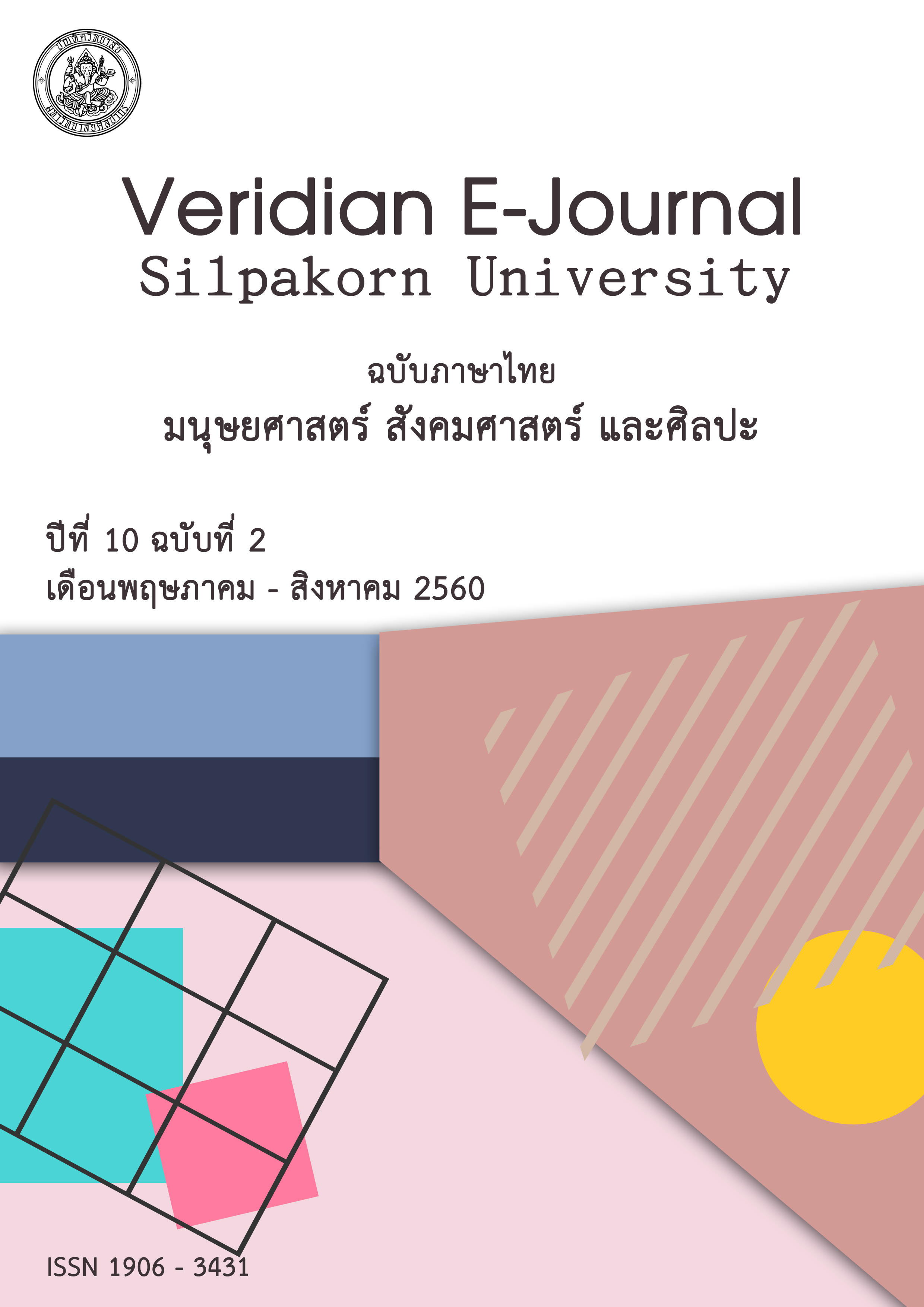การเปรียบเทียบคุณภาพของการปรับเทียบคะแนนสอบภาษาอังกฤษระหว่าง วิธีอิควิเปอร์เซ็นไตล์ วิธีเชิงเส้นตรง และวิธีสมการถดถอย
Main Article Content
Abstract
การวิจัยครั้งนี้มีวัตถุประสงค์ 1) เพื่อปรับเทียบคะแนนสอบภาษาอังกฤษระหว่างคะแนน SEPT และคะแนน TOEIC ด้วยวิธีอิควิเปอร์เซ็นไตล์ วิธีเชิงเส้นตรง และวิธีสมการถดถอย และ 2) เพื่อเปรียบเทียบคุณภาพของวิธีปรับเทียบระหว่าง 3 วิธี ดังกล่าว กลุ่มเป้าหมายในการวิจัยครั้งนี้เป็นนักศึกษาระดับปริญญาตรี หลักสูตรบริหารธุรกิจบัณฑิต สาขาการจัดการโรงแรม วิทยาลัยนานาชาติ มหาวิทยาลัยศิลปากร จำนวน 40 คน เครื่องมือที่ใช้ในการวิจัยคือ แบบสอบ Silpakorn English Proficiency Test (SEPT) และแบบสอบ Test of English for International Communication (TOEIC) ผลการวิจัยสรุปได้ดังนี้
- 1. ผลการปรับเทียบด้วยวิธีอิควิเปอร์เซ็นไทล์ วิธีเชิงเส้นตรง และวิธีสมการถดถอย
1.1 ผลการปรับเทียบด้วยวิธีอิควิเปอร์เซ็นไทล์ พบว่า ตำแหน่งเปอร์เซ็นไทล์ที่ 25 คะแนน SEPT เท่ากับ 54.75 ปรับเทียบคะแนน TOEIC เท่ากับ 527.50 ตำแหน่งเปอร์เซ็นไทล์ที่ 50 คะแนน SEPT เท่ากับ 62.00 ปรับเทียบคะแนน TOEIC เท่ากับ 667.50 และตำแหน่งเปอร์เซ็นไทล์ที่ 75 คะแนน SEPT เท่ากับ 72.50 ปรับเทียบคะแนน TOEIC เท่ากับ 766.25 ตามลำดับ
1.2 ผลการปรับเทียบด้วยวิธีเชิงเส้นตรง พบว่า การสร้างสมการแปลงคะแนนจากคะแนน SEPT ไปยังคะแนน TOEIC มีค่าคงที่ (constant) เท่ากับ -176.976 และค่าความชัน (slope) เท่ากับ 13.08 ได้สมการเส้นตรงดังนี้ คะแนน TOEIC = -176.976 +13.08SEPT
1.3 ผลการปรับเทียบด้วยวิธีสมการถดถอย คะแนน SEPT สามารถนำมาปรับเทียบคะแนน TOEIC ได้อย่างมีนัยสำคัญทางสถิติที่ระดับ .05 โดยมีค่าคงที่ (constant) เท่ากับ -1.185 และความชัน (slope) เท่ากับ 10.336 ได้สมการเส้นตรงดังนี้ คะแนน TOEIC = -1.185+10.336SEPT
- 2. ผลการเปรียบเทียบคุณภาพของวิธีปรับเทียบ
2.1 ผลการวิเคราะห์ความคลาดเคลื่อนของการปรับเทียบ พบว่า ทั้ง 3 วิธีมีค่าเฉลี่ยของความคลาดเคลื่อนไม่แตกต่างกัน
2.2 ความเพียงพอของการปรับเทียบโดยพิจารณาจากสัมประสิทธิ์การทำนาย (R2) พบว่า คะแนนจาก SEPT ที่ปรับเทียบด้วยวิธีเชิงเส้นตรง วิธีสมการถดถอย และวิธีอิควิเปอร์เซ็นไทล์สามารถทำนายค่าคะแนน TOEIC ได้ร้อยละ 62.6, 62.4 และ 60.2 ตามลำดับ โดยทั้ง 3 วิธีมีประสิทธิภาพในการทำนายไม่แตกต่างกัน
The purposes of this research were 1) to equating English scores between SEPT and TOEIC among equipercentile, linear and regression methods and 2) to comparison of quality of equating methods between equipercentile, linear and regression methods. Using the sample of 40 students from bachelor of business administration in hotel management, Silpakorn university international college. The research instruments were Silpakorn English Proficiency Test (SEPT) and Test of English for International Communication (TOEIC). The results of research were as follows:
- The result of equating between equipercentile, linear and regression methods
1.1 The result of equating with equipercentile method were found that the scores of SEPT and TOEIC at the 25th percentile equal to 54.75 and 527.50, the 50th percentile equal to 62.00 and 667.50, and the 75th percentile equal to 72.50 and 766.25, respectively.
1.2 The constant and slope of the equation of equating score from SEPT to TOEIC with linear method were -176.976 and 13.08, respectively. The linear equation is TOEIC = -176.976 +13.08SEPT.
1.3 The result of equating with regression method was found that the score from TOEIC was equated by SEPT at the significant level .05. The constant and slope of the were -1.185 and 10.336, respectively. The linear equation is TOEIC = -176.976 +13.08SEPT.
- The comparison of quality of equating
2.1 The error of equating between three equating methods was not different.
2.2 The adequacy of equating models were considered with coefficient of prediction. The score from TOEIC were equated by SEPT with equipercentile, linear and regression methods equal to 62.6, 62.4 and 60.2, respectively. The efficiency of equating was not different.
